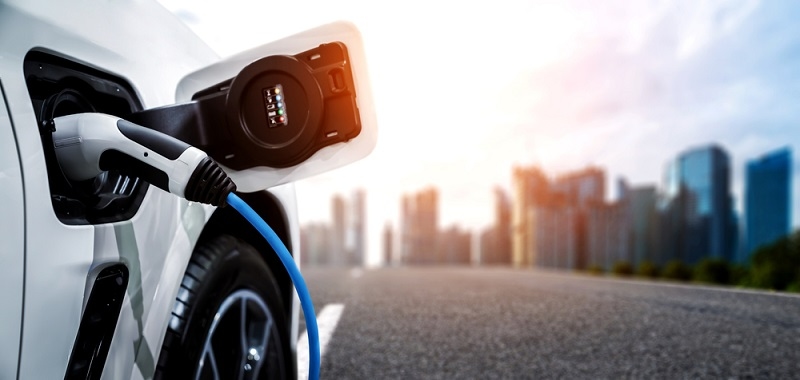
Not too long ago, the idea of an all-electric car seemed like something out of a sci-fi movie. Fast forward to today, and electric vehicles trends are reshaping the auto industry faster than most people can say, “Wait, where’s the gas tank?”
It’s no longer just Tesla leading the charge (pun intended). Legacy automakers, from Ford to GM to Volkswagen, are going all in on sustainable transportation, and consumers are starting to take notice. Whether you’re an early EV adopter or just trying to wrap your head around how long it actually takes to charge one, there’s no denying that electric cars are changing the game.
So, what’s behind this EV revolution? Let’s take a deep dive into how battery technology, infrastructure, and shifting attitudes are steering the future of transportation.
Sure, reducing carbon emissions is a big reason for the push toward EVs, but let’s get real—people don’t just buy cars because they’re eco-friendly. They want performance, convenience, and, let’s be honest, a little bit of that cool factor.
Gone are the days when electric cars were tiny, slow, and kinda ugly. Today’s EVs aren’t just efficient; they’re straight-up fun to drive.
Let’s talk money.
In short, EVs aren’t just better for the planet—they’re better for wallets, too.
If EVs are taking over, it’s largely because their batteries are finally up to the task. In the early 2000s, electric cars had a range of, well, not much. But thanks to breakthroughs in battery technology, range anxiety is becoming a thing of the past.
And the best part? Prices are dropping. Just a decade ago, EV batteries were so expensive that they made electric cars unaffordable for most people. Now, production costs are falling, making EVs more accessible.

One of the biggest concerns about EVs? Charging them. Let’s be honest—no one wants to plan their life around finding a plug. But that’s changing, and fast.
Most new EVs can charge up to 80% in about 20–30 minutes at a fast-charging station. That’s enough time to grab a coffee and check your phone before you’re back on the road.
Still, we’re not at gas-station-level convenience just yet. Rural areas lag behind in infrastructure, and long-distance road trips require some planning. But give it a few years—charging an EV will soon be as effortless as stopping for gas.
Read More: The Future of Custom Car Designs: 2025's Hottest Trends
EVs aren’t just about replacing gas-powered cars. They’re reshaping how we think about transportation as a whole.
Cities worldwide are switching to sustainable transportation by electrifying their public transit systems. Electric buses cut emissions and reduce noise pollution—no more loud diesel engines rattling the streets.
And it’s not just buses. Companies like Rivian and Tesla are working on electric delivery trucks, with Amazon and UPS already investing in EV fleets. That means fewer gas-guzzling delivery vans clogging up roads.
It might sound futuristic, but electric aviation is starting to take off (literally). Companies like Joby Aviation and Eviation are developing all-electric aircraft, with hopes of making regional air travel cleaner and quieter.
It’s early days, but within a decade, short-haul electric flights could become mainstream.
The shift to EVs isn’t slowing down. Automakers are setting deadlines to go fully electric, governments are pushing stricter emissions laws, and battery breakthroughs keep coming. So, what can we expect in the near future?
Right now, EVs are still pricier than gas cars upfront. But as battery costs drop and more automakers scale up production, sticker prices will start looking a lot more like their gas-powered counterparts.
Imagine parking your car and having it charge automatically—no cables, no plugs. Wireless charging tech is already being tested and could become a game-changer for EV convenience.
Solid-state batteries (the next big leap in battery technology) could push EV ranges beyond 500 miles and cut charging times to just minutes. If that happens, EV adoption will skyrocket.
By 2035, many countries (including the U.K. and parts of the U.S.) plan to ban new gas-powered car sales. That means buying an EV won’t be a trend—it’ll just be how things are done.
The auto sector is jumping headfirst, not merely dipping its toes into EV manufacturing. Some major automakers have already stopped entirely developing new internal combustion engines; others are announcing aggressive timetables to phase out gas-powered cars.
Given such intense rivalry, innovation is picking speed. From self-driving features to artificial intelligence-powered energy management, EVs are getting less expensive, more efficient, and loaded with modern technologies. Consumers could expect a tsunami of fresh models with improved pricing, range, and performance as manufacturers rush towards electrification.
Read More: The Road Ahead: Connected Car Tech Trends in the USA
It’s no longer a question of if electric cars will take over. It’s happening, and fast. Electric vehicles trends are reshaping the auto industry, from cutting-edge battery technology to the rapid expansion of charging stations. And it’s not just about cars—sustainable transportation is transforming everything from buses to delivery trucks to planes.
Yes, there are still challenges. Charging infrastructure has room to grow, and EV prices need to come down. But the momentum is undeniable.
So, whether you’re already behind the wheel of an EV or just watching the transition unfold, one thing’s clear: the future of driving is electric.
This content was created by AI